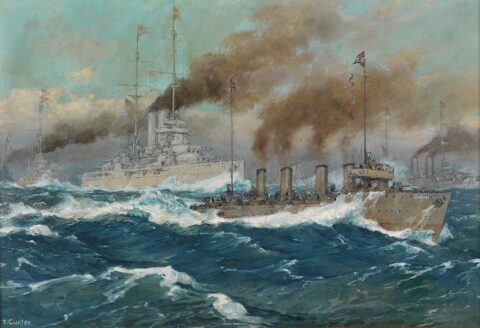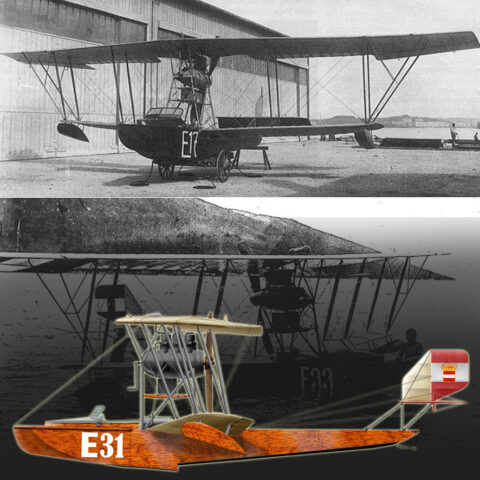Category: Austro-Hungarian Navy
Lohner E (1913)
✠ K.u.K. Seefliegerkorps: c40 manufactured 1913-1914. In service until 1916 The Lohner E was an Austro-Hungarian reconnaissance flying boat of…

Tátra class destroyers (1912)
Austro-Hungarian Navy (1911-1937): Tátra, Balaton, Csepel, Lika, Triglav, Orjen. Ersatz: Triglav(ii), Lika(ii), Dukla, Uszok Tátra class destroyers: SMS Tátra, Balaton,…
Versuchsgleitboot
Versuchsgleitboot 1 prototype (1916) The Austro-Hungarian secret weapon The Versuchsgleitboot (“Above, gliding boat”) was a prototype of a fast, small…
Zara class torpedo vessels (1880)
Zara class torpedo vessels (1880) Zara, Spalato, Sebenico, Lussin The forgotten Zara class cruisers When speaking of “Zara”, the name…
Admiral Spaun & Novara class cruisers
Admiral Spaun & Novara class cruisers Austria-Hungary (1909-13) SMS Admiral Spaun, Novara, Saida, Helgoland. The last Austro-Hungarian cruisers The Novara…
Tegetthoff class battleships (1911)
Tegetthoff class battleships (1911) Tegetthoff, Viribus Unitis, Prinz Eugen, Szent Istvan (1911) First Dreadnoughts and last Austro-Hungarian battleships: SMS Tegetthoff…
Herzherzog Karl class battleships
Herzherzog Karl class battleships Erzherzog Karl, Ferdinand Max, Friedrich (1902) The previous Herzherzog Ferdinand Max in 1900, former famous Ironclad…
Habsburg class battleships
Habsburg class battleships Habsburg, Babenberg, Árpád (1898) The first Austrian sea-going Battleships: After the three Monarchs in 1898, the director…
SMS Sankt Georg (1903)
SMS Sankt Georg (1903) Austro-Hungarian armoured cruiser The last Austrian armoured cruiser: After the Kaiser Karl IV’s departure, the admiralty…
Kaiser Franz Joseph I class protected cruisers (1889)
Kaiser Franz Joseph I class protected cruisers (1889) Kaiser Franz Joseph I, Kaiserin Elisabeth (1889) SMS Kaiserin Elisabeth sea trials…


 dbodesign
dbodesign